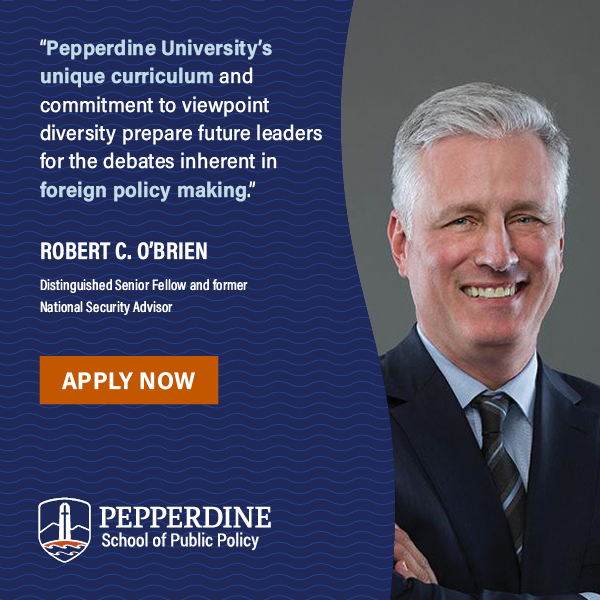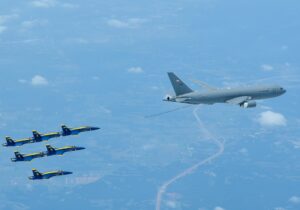In business and sports, there are multiple variations of the cliché: “You win when your opponent makes more mistakes.” The same principle applies to warfare, where one side’s strategic missteps can decisively impact the war’s outcome.
During World War I, Germany’s unrestricted submarine warfare and the leaking of the Zimmermann Telegram—a secret German proposal to Mexico for a military alliance against the United States—motivated the Wilson administration to abandon its neutrality and enter the war on the side of the Allies. During World War II, Winston Churchill recalled in his memoir that he slept “the sleep of the saved and thankful” upon hearing news of Japan’s attack on Pearl Harbor, confident that the United States would now join the war against the Axis Powers.
Today, after three years of attritional warfare with Russia, Ukraine faces a significant strategic challenge. The United States, which has led international efforts to provide economic and military support to Ukraine, has shifted from Biden’s commitment to supporting Ukraine “for as long as it takes” to Trump has vowing to end the Russia-Ukraine war quickly and reduce U.S. involvement in European security.
During the recent bilateral summit at the White House, Trump berated Ukraine’s President Volodymyr Zelensky for not expressing sufficient gratitude for US support and risking a “World War III” by prolonging the war with Russia. Trump warned that without US support Ukraine has “no cards” in dealing with Russia. In a demonstration of Trump’s warning, the US temporarily suspended providing military aid and intelligence support to Ukraine, escalating security anxieties across Europe.
For Ukraine, the military situation would significantly worsen without U.S. support. Europe will likely struggle to provide the same quality of military technology and intelligence that the U.S. currently supplies. Subsequently, Ukraine is strategically vulnerable (despite defiant reactions from its leaders and populace) to US threats to impose a “peace deal” that falls short of Ukraine’s war objectives.
In an effort to improve its strategic position, Ukraine has sought to reconcile with the Trump administration. Urged by European leaders, Zelensky expressed regret over his recent disputes with Trump and reaffirmed his commitment to signing the bilateral mineral agreement. On March 11, Ukraine agreed to the U.S. request for a 30-day comprehensive ceasefire, leading to the resumption of U.S. military aid and intelligence support. However, the greater impact on Ukraine’s strategic situation will likely stem from Russia’s response to Trump’s diplomatic overture.
Though Trump has disappointed Ukraine by indicating his opposition to Ukrainian membership in NATO and describing Ukraine’s recovery of its occupied territory as unlikely, his stated aims contradict Russian demands in at least four areas.
First, the Trump administration’s preference is to “freeze” the war along the current front lines, deterring military offensives from both Ukraine and Russia. Russia however, has maintained territorial demand over the entirety of four Ukrainian regions (Luhansk, Donetsk, Kherson, Zaporizhzhia) which it formally annexed in 2022, despite Ukraine’s continued control over sizable portions of these territories.
Second, while declining to guarantee explicit U.S. security assurances for Ukraine, the Trump administration has signaled a willingness to support Ukraine’s efforts to enhance its own defense capacity in maintaining a post-war settlement. In contrast, Russia has demanded restrictions on Ukraine’s militarization.
Third, the Trump administration appears supportive of Europe’s proposal to send peacekeepers and security assistance to Ukraine as part of its broader strategy to shift U.S. security commitments toward European nations (Trump however, has been critical of Europe’s request for US to provide “backstop” reassurance for Europe’s peacekeeping operations in Ukraine). Russia, however, has opposed European peacekeepers and military aid as contrary to its demands for Ukraine’s post-war strategic neutrality.
Fourth, Ukraine has accused Russia of abducting children from occupied Ukrainian territory and resettling them in Russia. The Trump administration has signaled support for Ukraine on this issue, proposing “humanitarian steps” during the month-long ceasefire to facilitate the exchange of prisoners, the release of detained civilians, and the return of “forcibly transferred Ukrainian children.” Russia, in contrast, has denied that any forced relocation of Ukrainian children has taken place.
Russia has cited these differences for declining the immediate implementation of a ceasefire. Though not an outright rejection, Russian President Vladimir Putin suggested further negotiations on a set of preconditions, including broader discussions on the “root cause” of the conflict between the West and Russia, while continuing military operations against Ukraine. Russia’s stalling of the U.S.-proposed ceasefire could present a strategic opportunity for Ukraine insofar as Putin’s refusal to moderate may to persuade Trump that Russia is the true obstacle to peace and not Ukrainian obstinacy.
Trump has been ambiguous on whether he would employ coercive pressures on Russia. The Trump administration has extended existing U.S. sanctions on Russia, and Trump has suggested he may consider imposing new sanctions until a peace deal is reached. However, Trump has commented that he finds it “easier” to deal with Russia than with Ukraine, and his administration has expressed “cautious optimism” regarding Russia’s equivocal response to the ceasefire proposal.
Russia’s continued hardline stance on territorial control and post-conflict security arrangement, however, may test the Trump administration’s patience and could be seen as excessive and contrary to US strategic interests. With the US-Ukraine mineral deal expected to be signed soon, the Trump administration will likely be averse to Russia’s continued military offensives, which threaten Ukraine’s territorial control over mineral resources near the current front lines. While it seeks to limit U.S. security involvement in Ukraine, the Trump administration may be indifferent to accommodating Russia’s demand to also prevent Europe’s assistance to Ukraine. Additionally, Russia’s proposal to address the “root cause” of the West-Russia conflict may be perceived by U.S. officials as too complex and an unnecessary impediment to a quick war settlement.
Finally, similar to U.S. mediation in the current Israel-Hamas war and U.S.-DPRK negotiations during Trump’s first term, U.S. officials may see diplomatic advantages in including a humanitarian component (i.e. return of Ukrainian civilians) in the peace settlement. Trump’s strategy of limiting US security commitments in Europe is unlikely to change, yet Russia’s response toward his peace terms could influence the Trump administration’s strategic reassessment in establishing a durable war settlement in Ukraine.
After securing Ukraine’s agreement to a one-month ceasefire, U.S. Secretary of State Marco Rubio remarked, “The ball is now in Russia’s court.” Ukraine may still be forced to accept concessions regarding territorial sovereignty and security reassurances in the eventual settlement. Even so, drawing from Churchill’s words, Ukrainian and European leaders may perhaps sleep a little more soundly if Putin’s next move—whether throwing the ball back or continuing to stall—causes Trump to conclude that his “win” requires Putin to also accept some “losses.”









